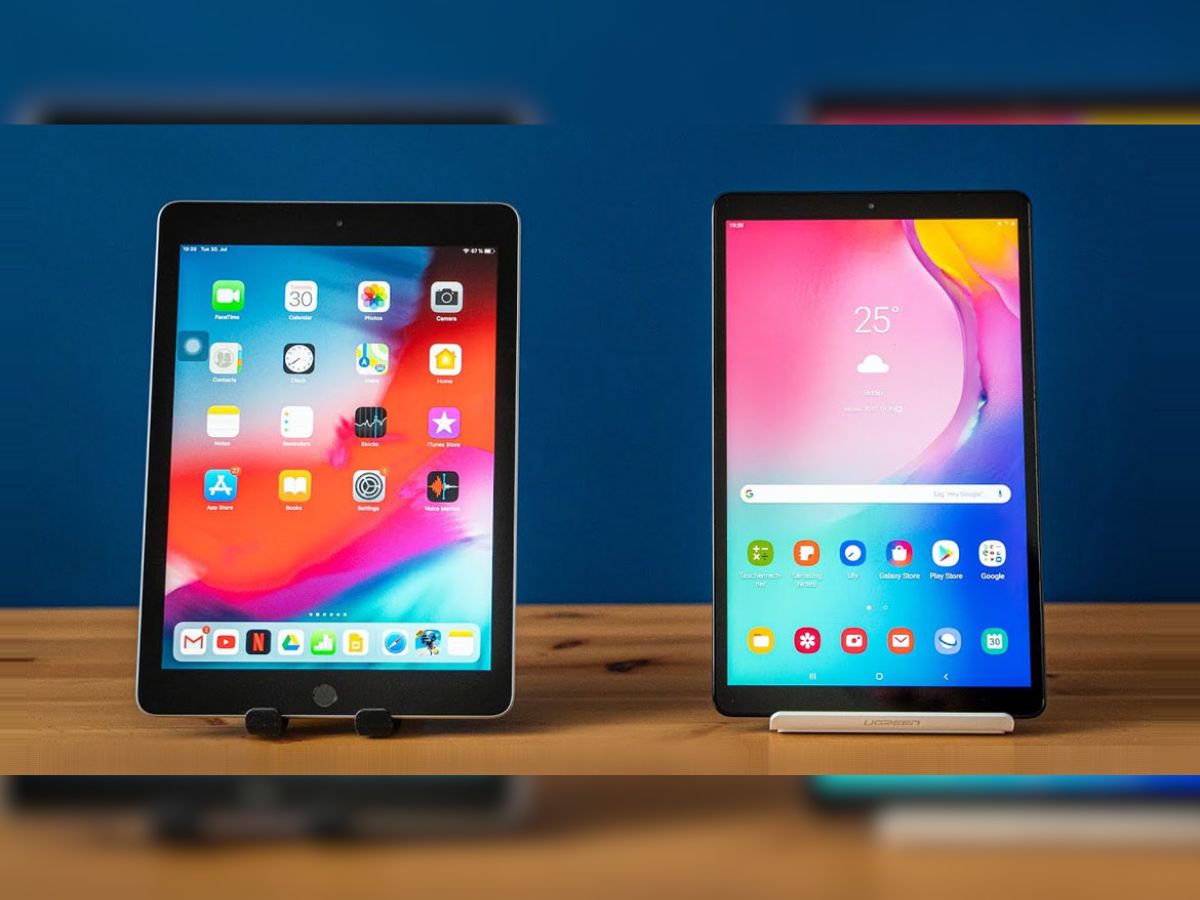
Source: Myg.in
Operating Systems: The Foundation of Choice
iPads
- Run on Apple's iOS
- Known for user-friendly interface
- Seamless integration with other Apple devices
- Robust security features
Android Tablets
- Operate on Google's Android
- Offer more customization options
- Wider range of apps, including exclusives
- More susceptible to malware and security threats
Performance and Hardware
iPads
- Robust performance with A-series processors
- Efficient battery life
- High-resolution displays with vibrant colors
- Seamless integration with other Apple devices (Handoff, Sidecar)
Android Tablets
- Hardware customization advantages
- Faster processors and more powerful cameras in some models
- Expandable memory options
- Quality varies significantly by manufacturer
Software and Apps
iPads
- App Store offers over one million apps specifically designed for the platform
- Strict approval process ensures security and quality
- Many productivity apps optimized for iPad
Android Tablets
- Google Play Store boasts a large number of apps
- Less curated selection compared to App Store
- Open approach encourages more app development
Design and Screen Quality
iPads
- Sleek designs with high-quality displays
- Retina displays offer stunning visuals
- Exceptional build quality with durable materials
- Aesthetically pleasing design
Android Tablets
- Significant variation in design and screen quality
- High-end models offer premium designs and high-resolution displays
- Budget-friendly options may lack in build quality and display resolution
Pricing
iPads
- Generally more expensive than Android tablets
- Superior build quality, performance, and ecosystem integration justify cost
- Latest models start at around $449, iPad Pro can cost upwards of $1,000
Android Tablets
- Wide range of pricing options
- Budget-friendly models start as low as $50-$100
- High-end models from brands like Samsung can cost upwards of $1,000
Security
iPads
- Considered more secure due to Apple's tightly controlled ecosystem
- Robust encryption methods and regular software updates
- App Store's strict approval process ensures vetted apps
Android Tablets
- More vulnerable to malware and security threats due to open nature
- Google Play Store allows installation of third-party apps
- Openness encourages more app development
Final Thoughts
Choosing between an Android tablet and an iPad depends on specific needs and preferences. If seamless user experience, robust security, and superior ecosystem integration are priorities, an iPad might be the better choice. For those seeking customization options, a wider range of apps, and potentially lower pricing, an Android tablet could be more suitable. Understanding the differences helps in making an informed decision that best suits individual lifestyle and technological needs.
